The document discusses a comprehensive guide on testing AI application metrics, focusing on critical measures to assess the performance, reliability, and efficiency of AI systems. It highlights best practices for testing, challenges faced during AI application testing, and the role of AI and machine learning in enhancing software testing processes. The study emphasizes the importance of ethical practices, data privacy, and a collaborative approach between developers and testers for effective AI application testing.
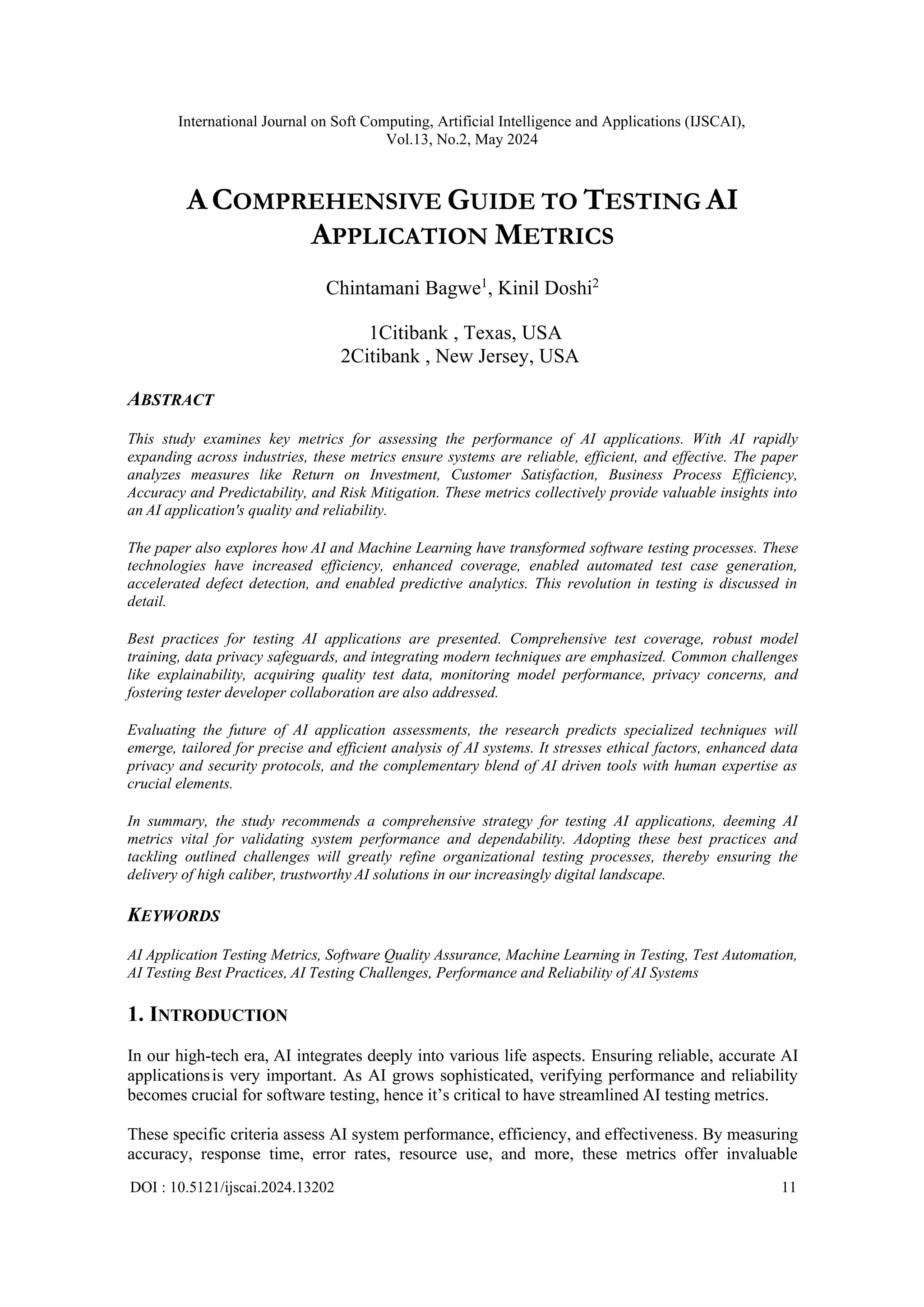
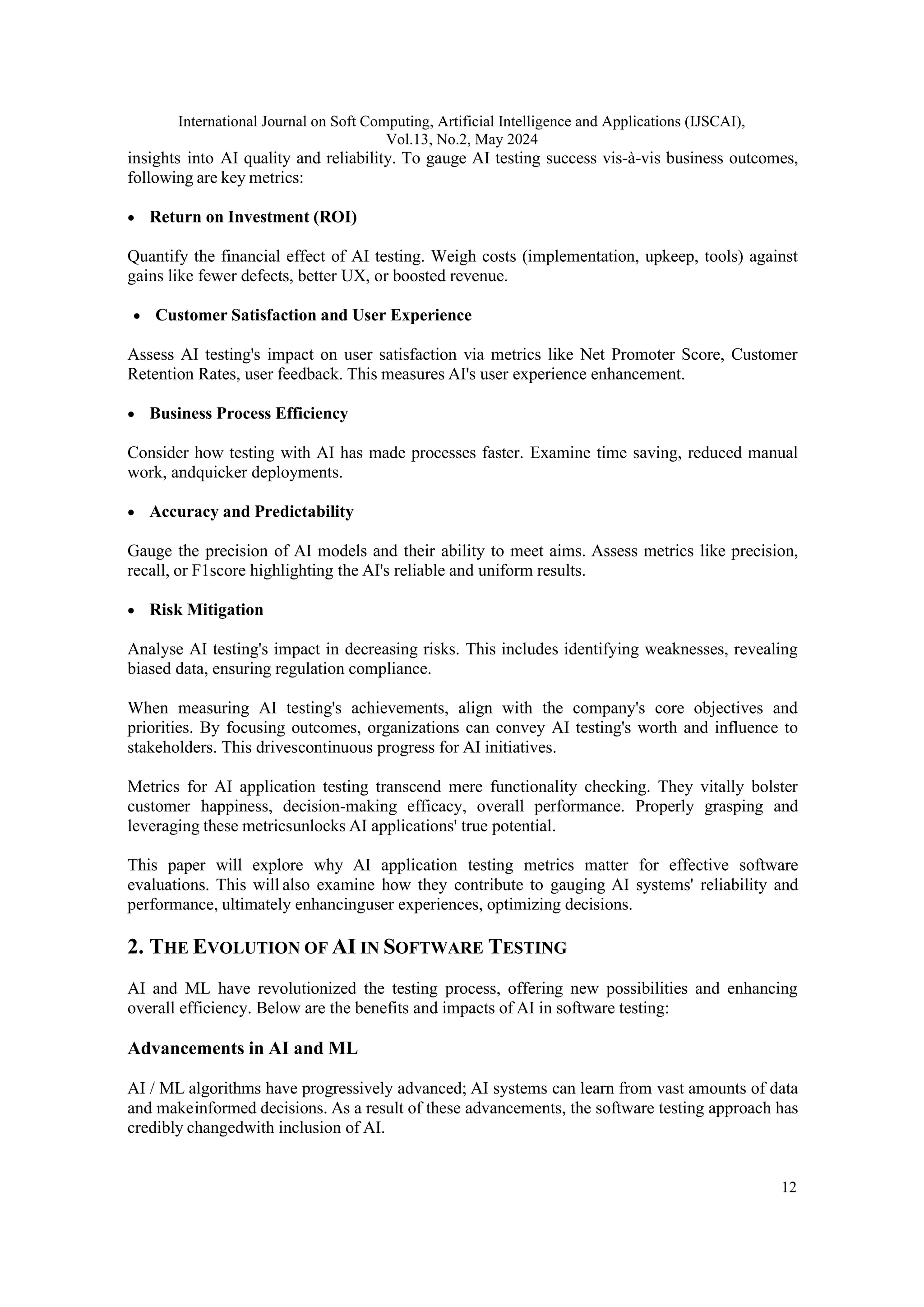
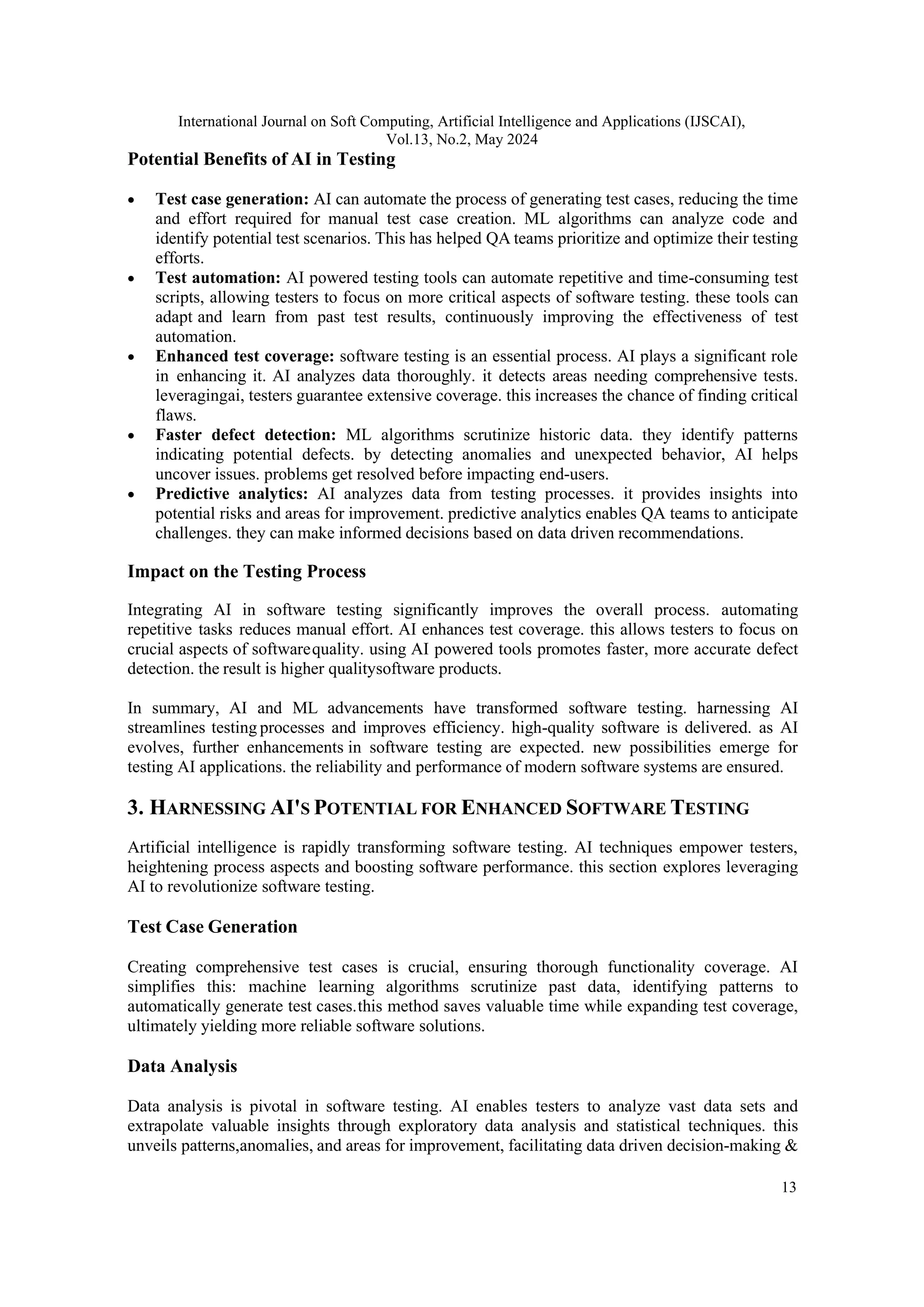
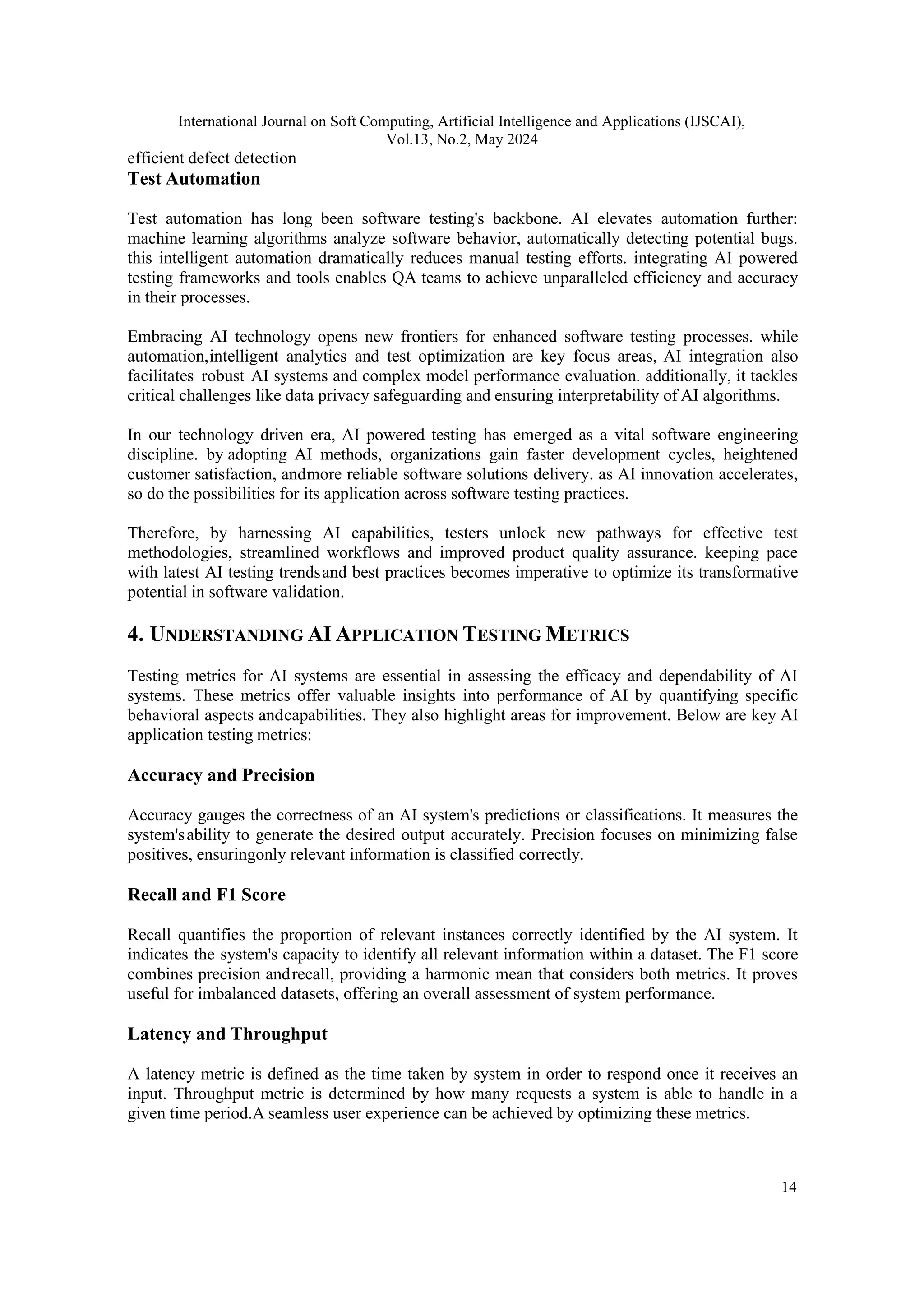
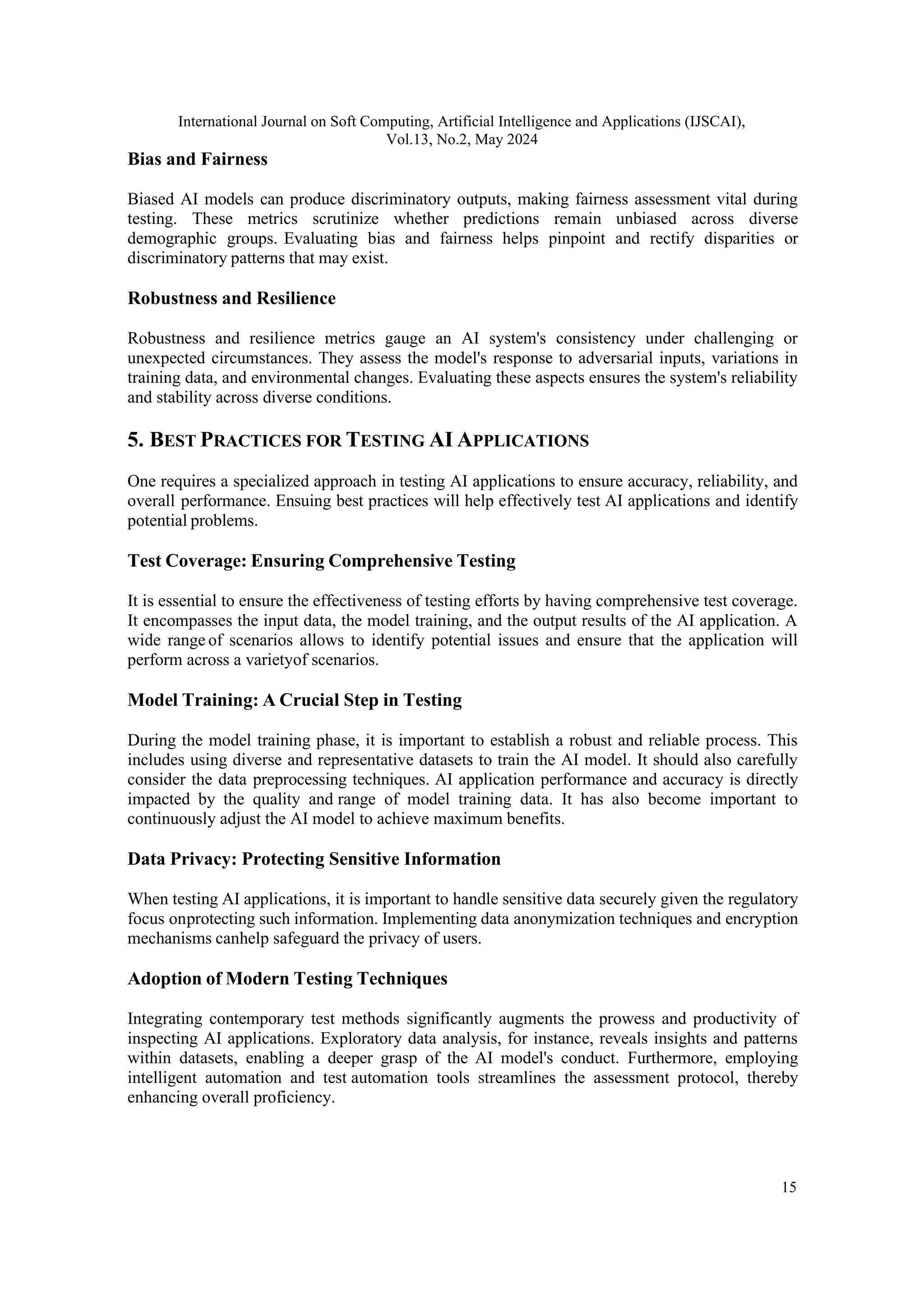

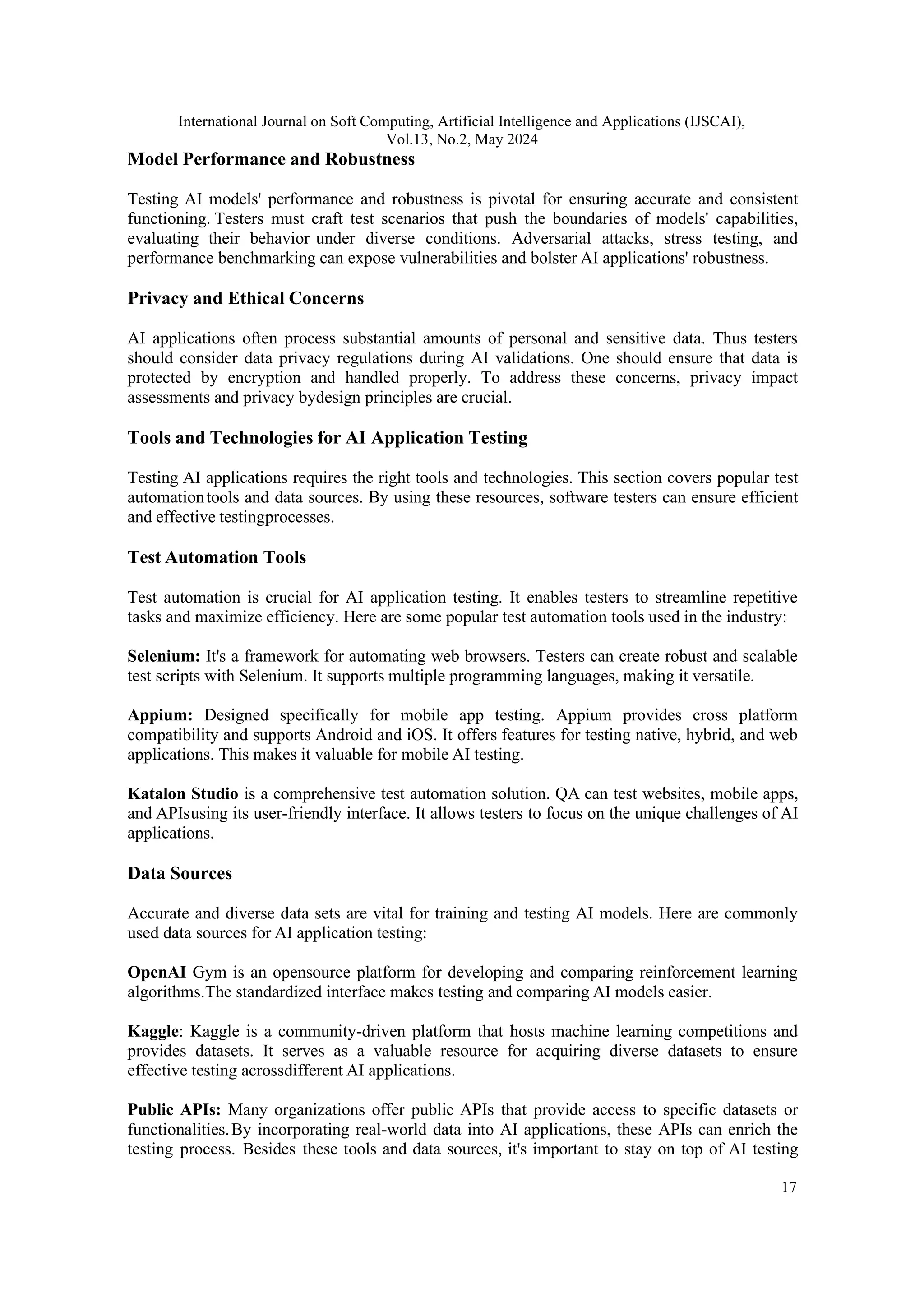

![International Journal on Soft Computing, Artificial Intelligence and Applications (IJSCAI), Vol.13, No.2, May 2024 19 unlock AI's full potential, ensuring high- quality and reliable AI applications in today's technology driven environment. AI testing progresses by adapting to ethical standards through teamwork between artificial intelligence systems and skilled human testers, ensuring continuous improvement. 8. CONCLUSION Testing artificial intelligence (AI) applications effectively is paramount. Organizations must leverage AI metrics to validate software quality and performance. Without proper testing, AI systems may fail to meet expectations, leading to potential risks and dissatisfied customers. This comprehensive guide explores the significance of AI application testing metrics. It examines AI's evolution in software testing, highlights best practices for assessing AI applications, and addresses common challenges. The guide provides valuable insights into optimizing AI systems through rigorous testing methodologies. AI metrics evaluate the behavior and capabilities of AI algorithms, ensuring outputs align with desired criteria. These metrics play a crucial role in assessing the performance and reliability of AI systems. By analyzing metrics, organizations can make informed decisions and implement necessary improvements. Following the outlined best practices, organizations can thoroughly test AI applications, including areas liketest coverage, model training, and data privacy. Leveraging automation tools, diverse data sources, and advanced techniques enhances the testing process's effectiveness. Software testing's success depends on two crucial elements: AI's potential and comprehending applicationtesting metrics. Following this guide's recommendations enables companies to harness AI and ML for optimal testing, delivering high-quality solutions efficiently. Testing and quality assurance thrive when organizations grasp AI application testing metrics' significance.Leveraging AI isn't solely about efficiency; it's about understanding these metrics' pivotal role in project triumphs. REFERENCES [1] F Score by Thomas Wood https://deepai.org/machinelearningglossaryandterms/fscore [2] IBM Securing AI systems with adversarial robustness https://research.ibm.com/blog/securingaiworkflowswithadversarialrobustness [3] A Complete Guide to Testing AI and ML Applications https://www.qed42.com/insights/acompleteguidetotestingaiandmlapplications#criticalaspectsofais ystemstesting [4] Performance Metrics in Machine Learning [Complete Guide] https://neptune.ai/blog/performance- metrics-in-machine-learning-complete-guide [5] AI Software Testing: Unveiling the Future of Software QA https://www.functionize.com/automated- testing/ai-testing-101 [6] A Comprehensive Guide on How to Monitor Your Models in Production https://neptune.ai/blog/how- to-monitor-your-models-in-production-guide [7] Unlocking the potential of Artificial Intelligence https://aiforsocialgood.ca/blog/unlocking-the- potential-of-artificial-intelligence-a-comprehensive- guide-to-testing-and-quality-assurance [8] Testing the Future: A Guide to Testing AI Products with Users https://www.uxmatters.com/mt/archives/2023/06/testing-the-future-a-guide-to-testing-ai-products- with-users.php](https://image.slidesharecdn.com/13224ijscai01-241127131555-00eb6ad9/75/ACOMPREHENSIVE-GUIDE-TO-TESTING-AI-APPLICATION-METRICS-9-2048.jpg)
